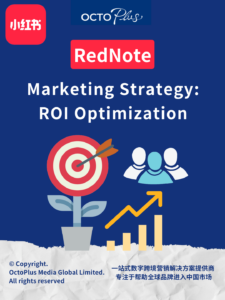2023 Latest China Consumer Report and Key China Consumption Trends
Recent macroeconomic challenges have dampened Chinese consumer morale after years of exuberant economic expansion and growing consumer spending. Consumers’ expectations were obscured by stock market declines, a drop in real estate transactions, and mobility limitations meant to contain the COVID-19 virus. We have extracted the below excerpt from the report “2023 McKinsey China Consumer Report” released by McKinsey.
Overview
China’s economy nevertheless shows some resilience despite the economic challenges and the drop in consumer confidence. According to China’s National Bureau of Statistics (NBS), the first nine months of 2022 saw a nominal increase in disposable income per person of 5.3%. When compared to pre-pandemic levels, urban employment remained stable in September at 5.5%, and in the first nine months of 2020, consumer price inflation had increased by an average of 2%.
58% of urban households said they wanted to “save money for a rainy day” and reiterated their intention to save money rather than spend it, consider the highest level since 2014. The quick growth in savings deposits, which climbed by RMB14 trillion in the first nine months of 2022, demonstrates Chinese consumers’ greater desire to save rather than spend their money.

The Ministry of Commerce reports that inbound foreign direct investment (FDI) in China has been running at record highs, reaching a record $181 billion in 2021, a 21% increase over the previous year, despite media reports of impending downsizing or even withdrawal of multinational companies from China. Despite the pressure of slow economic growth, FDI increased quickly once more in the first half of 2022, jumping 24% YoY.
5 trends in China’s consumer market
Trend 1: The expansion of the middle class
The fact that China’s base of upper-middle and high-income consumers, who made up 55% of urban household consumption last year, is still expanding quickly is one major cause for optimism. China continues to be the only nation that creates as many middle-class earners as possible each year. With yearly incomes above RMB160,000, these households are gradually joining the upper-middle class and the high-income group. Between 2019 and 2021, the population increased by 18%, from 99 million to 138 million. China is anticipated to generate an additional 71 million upper-middle and high-income households over the following three years. According to the McKinsey global consumer survey, 49% of respondents in China agreed that “within 2-3 months, the economy will rebound and become just as strong as pre-COVID-19 or even more so”, as opposed to 11% – 26% of consumers in mature markets. This supports the overall optimism expressed by consumers in the China survey.

Trend 2: Premiumization keeps going
Despite increased concerns about the economy and personal incomes during difficult times, luxury brands continue to outperform mass brands as consumers prefer premium brands when they want to reward themselves. High-income consumers are increasing their expenditure across nearly all fast-moving consumer goods (FMCG) categories. High-income consumers plan to spend their cash; 26% of respondents spend more in 2022 than they did the previous year, while only 14% limit their expenditure. With the arrival of trendy and inventive local companies, many multinational brands that once held a dominant position in the mass or mainstream category are being buffeted by competition and experiencing dramatic sales reductions.

Trend 3: Making wiser decisions without downgrading
The shift in market dynamics enables customers to retain their standard of living by making more stringent trade-offs; some are even able to buy more while spending less by actively pursuing discounts and promotions. Rather than compromising by switching to cheaper brands or products, high-income consumers limit their buying frequency or adjust their preferences in specific areas, whereas choosing cheaper products line within the same brand or cheaper channels is the alternative for lower-income consumers. Consumers are getting smarter about the products and channels they buy instead of downgrading. 60% of Chinese consumers interact at least once per day with over-the-top (OTT) music and video streaming platforms, spending an average of roughly two hours per day watching short-video platforms. Due to less marketing, and more on offering content-based product information and a highly interactive user experience that assists consumers in making more informed selections has to make Douyin gain popularity among Chinese consumers.

Trend 4: The focus is on the product
Functionality increased its lead as the most significant factor affecting Chinese consumers of fast-moving consumer products in 2022, having regained ground lost to emotional considerations between 2015 and 2019. Chinese consumers are quite informed about the characteristics and specifics of the things they purchase, from the substances in cosmetics and skincare to the type and quality of the jacket. While consumer confidence and spending may continue to fluctuate with the changing socioeconomic situation, one trend is Chinese consumers’ focus on researching and purchasing products that suit their more stringent needs.

Trend 5: Local businesses are succeeding
Customers no longer pay a premium for foreign brands; Chinese companies now produce outstanding products that are competitive or, in certain cases, “higher quality” than overseas peers, as supported by 49% of Chinese consumers. Local brands are being chosen by Chinese consumers for their quality and innovation, rather than for low pricing or a sense of national pride. Nowadays, domestic companies can offer high-quality products with a distinct value proposition that appeals to Chinese consumers and is reacting to trends faster with bolder investments. As such, the demand for local brands has increased in recent years.

As economic difficulties force Chinese customers to be pickier, they are increasingly opting for high-quality and functional products. Companies that can respond swiftly to changes will beat their competitors as China’s consumer market is expanding.
If you’re interested to find out more about advertising marketing in China or to access the full report, please contact us with the form below.
Feel free to talk to us
It’s a team with one single shared goal, which is our client’s success. Deliver results for your business now.
































